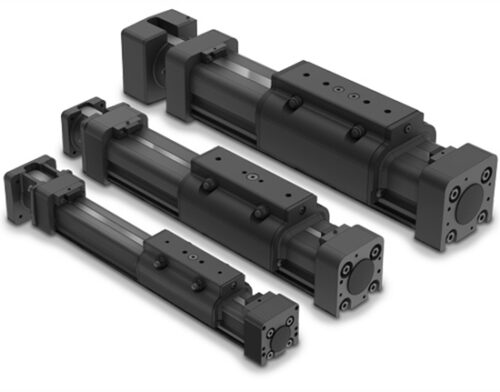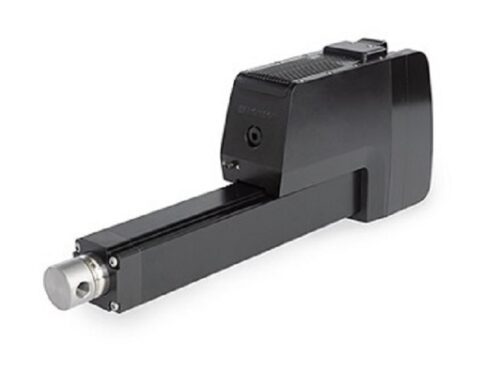Electro-Mechanical vs. Hydraulic & Pneumatic Actuators
Electro-mechanical actuators offer several advantages over hydraulic and pneumatic systems. Below is a detailed comparison supported by summary insights to help guide your selection.
Ease of Installation
Electro-mechanical actuators offer straightforward installation with simple wiring. In contrast, hydraulic and pneumatic systems require complex plumbing, filtration, and pumps, which increase setup time and cost.
Positioning Accuracy
Electrical actuators deliver highly repeatable positioning (±0.013 mm) and multi-stop precision. Meanwhile, hydraulic and pneumatic options demand costly sensors and valving, and often suffer from creep.
Motion Control Capabilities
Electro-mechanical systems integrate seamlessly with programmable controls, enabling precise automation. On the other hand, fluid-based systems face control challenges due to hysteresis, pressure fluctuations, and non-linear behaviour.
Speed & Responsiveness
Electric actuators provide smooth, variable speeds up to 2 m/s with controlled acceleration. Conversely, hydraulic and pneumatic systems struggle with stick-slip effects and inconsistent performance under varying loads.
Operational Reliability
Electro-mechanical actuators maintain consistent performance with minimal maintenance. By comparison, hydraulic and pneumatic systems are sensitive to contamination and require frequent upkeep to remain reliable.
Force Output
Hydraulic systems deliver the highest force, but electro-mechanical actuators still achieve up to 222,200 N. Typically, pneumatic cylinders are used for lighter loads below 6,000 N.
Durability & Lifecycle
Electric actuators can perform millions of cycles at rated load with predictable longevity. In contrast, fluid-based systems depend heavily on seal integrity and wear, making lifespan harder to forecast.
Environmental Suitability
Electro-mechanical units operate cleanly across -30 to +70 °C. However, hydraulic and pneumatic systems face issues with leaks, waste disposal, and airborne oil under extreme conditions.
Load-Holding Safety
Electric actuators offer self-locking options and fail-safe brakes. Meanwhile, hydraulic and pneumatic systems require additional backup safety mechanisms to hold loads securely.
Cost Efficiency
Although electric actuators have moderate upfront costs, their operating expenses are low. Conversely, fluid systems may seem cheaper initially but incur higher installation and maintenance costs over time.
Technical Comparison Table
| Electro-Mechanical Actuators Comparison | |||
|---|---|---|---|
| Electrical Linear Actuators | Hydraulic Cylinders | Pneumatic Cylinders | |
| Ease of Installation | All electric operation requires simple wiring. | Requires expensive plumbing, filtering, pumps, etc. | Requires expensive plumbing, filtering, pumps, etc. |
| Positioning Accuracy | Very repeatable (to ± 0,013 mm) and rigid, multi-stop capabilities. | Requires expensive position sensing and precise electrohydraulic valving to implement, though tends to creep. | Difficult to achieve. Requires expensive position sensing and precise valving to implement, though tends to creep. |
| Motion Control Capabilities | Directly compatible with standard programmable controls, thus allowing easy automatic operation of complex motion sequences. | Requires electronic/fluid interfaces and exotic valve designs. Hysteresis, dead zone, supply pressure and temperature changes complicate control. | Inherently non-linear, compressible power source severely complicates servo control. |
| Speed & Responsiveness | Smooth, variable speed from 0 to 2 m/s with controlled acceleration. | Difficult to control accurately. Varies with temperature and wear. Stick-slip can be a problem. | More susceptible to stick-slip and varying load, though well-suited for light high-speed applications.</ |







